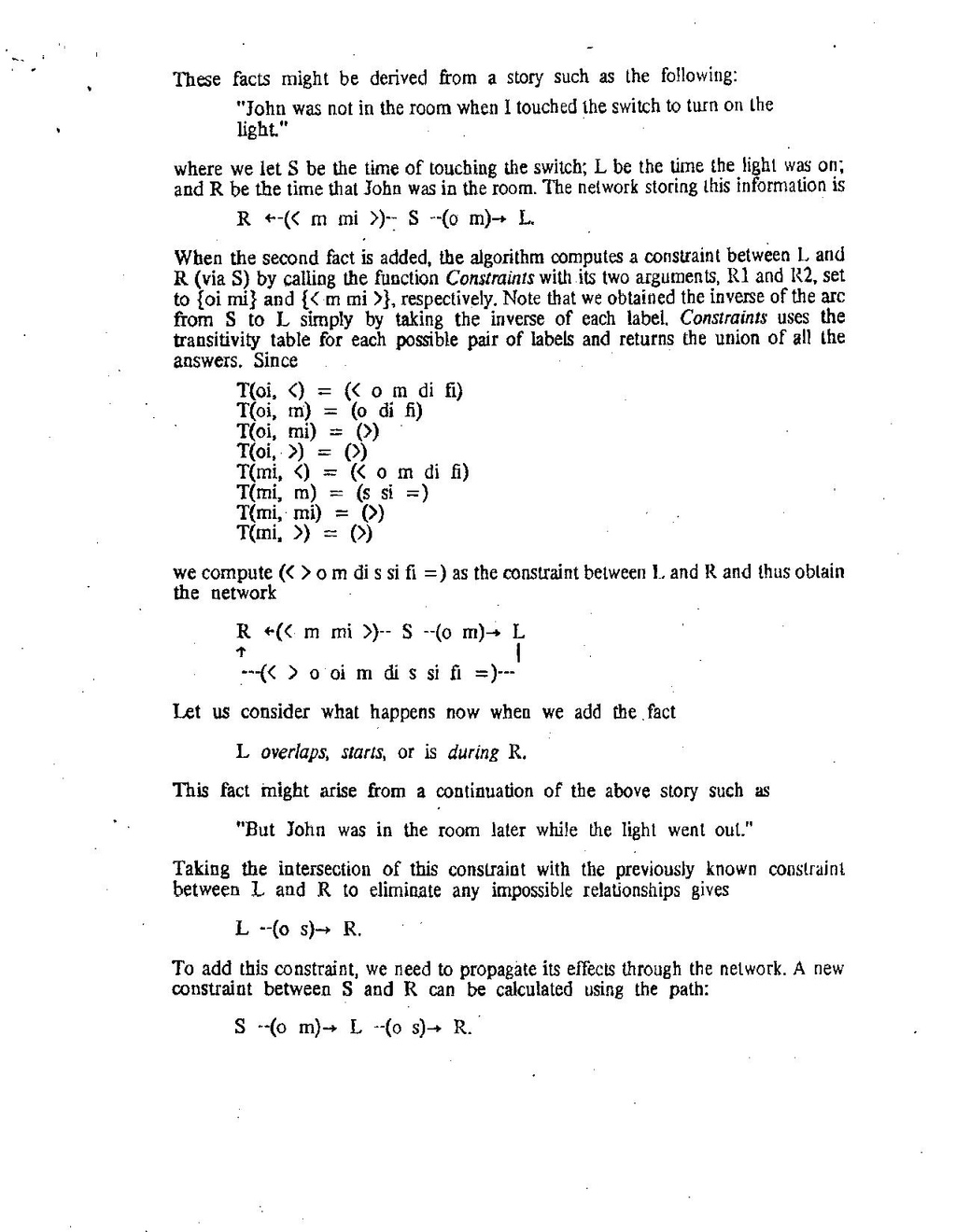These facts might be derived from a story such as the following:
"John was not in the room when I touched the switch to turn on the light."
where we let S be the time of touching the switch; L be the time the light was on; and R be the time that John was in the room. The network storing this information is
R +-( m mi »)-- S --(o m)-- L. When the second fact is added, the algorithm computes a constraint between L and R (via S) by calling the function Constraints with its two arguments, R1 and R2, set to {oi mi} and {<m mi >}, respectively. Note that we obtained the inverse of the arc from S to L simply by taking the inverse of each label. Constraints uses the transitivity table for each possible pair of labels and returns the union of all the answers. Since
T(oi, <) (om di fi) Toi, m) = 0 đi fi) T(oi, mi) Toi, ») = () T(mi, () Kom di fi) Tími, m) = (s şi =) T(mi, mi) = (>)
Tmi, ») = (>) we compute (< >om di s si fi =) as the constraint between L and R and thus obtain the network
R+(< m mi >-- S --(o m) + L 个 ---(<>ooi m di s si fi =) ---
Let us consider what happens now when we add the fact
L overlaps, starts, or is during R. This fact might arise from a continuation of the above story such as
"But John was in the room later while the light went out."
Taking the intersection of this constraint with the previously known constraint between L and R to eliminate any impossible relationships gives
L --(0 s)-- R.
To add this constraint, we need to propagate its effects through the network. A new constraint between S and R can be calculated using the path:
S --(o m)-L (0 s)-- R.
